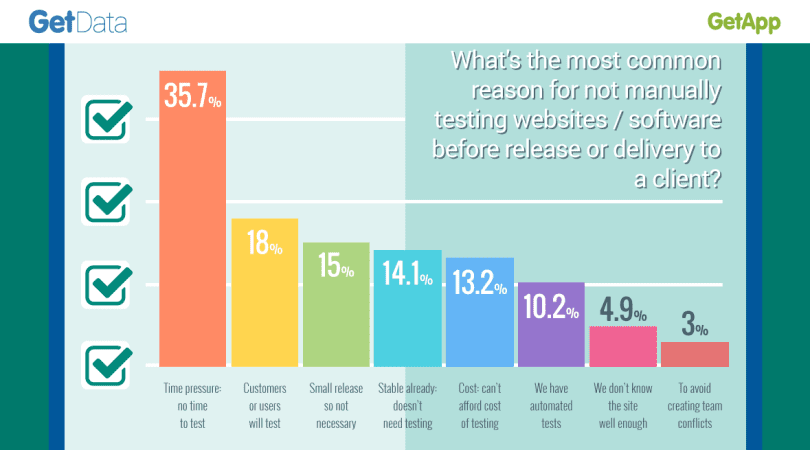Manual testing is a crucial phase in SDLC, but some teams regularly choose to skip over it. The benefits of testing are saving time, greater efficiency, and delivering a close to perfect end product to the client. So, why would software testing teams risk both reputation and perhaps future contracts by not being as thorough as they should be ahead of release? Some teams don’t even employ dedicated testers. Just as bad, some teams have developers automate a handful of test scripts and call it a day. In some industries, it might be possible to get by with this degree of testing, but not in many others. Manual testing performed by real humans is vital in making sure the application does not contain any critical bugs.

Manual testing is the process of physically executing a series of tasks, then comparing the actual results with the expected results. The actual results are then compared with the desired results. Essentially, this means using the application in the same way an end-user would, to discover if each feature acts as expected under all possible scenarios.
So why do some teams choose to skip manual testing? We teamed up with GetApp to find out. We asked:
“What’s the most common reason for not manually testing websites/software before release or delivery to a client?”
The results are in, and we found them quite interesting. The number one reason people don’t manually test their application before release is, they “don’t have enough time.”

Not Enough Time to Test
Nearly 36% of respondents said they don’t manually test their software because they don’t have time. We are all constantly struggling for more time in all parts of our lives. Because of the perception that we have tightly limited time, we need to prioritize to make sure we do the essential things. In software development, if we don’t prioritize, testing can lead to unwanted consequences down the road. When there is no time allocation for testing, there’s the risk that your customers will be the ones to find the bugs and usability issues. These faults should have already been found and fixed before release. By cutting corners and not testing the application before release due to time limits, your team could easily end up spending even more time fixing bugs and re-deploying – and stressing your client!
The Customer or User will do the Manual Testing
To our surprise, 18% of people responded that they don’t manually test their software or website before a release because they depend on the customer or user to test it. From a customer service point of view, this isn’t wise. It’s not the customer’s responsibility to find and report bugs – it’s yours. Bugs will happen, and at times, customers will find them, but if you can reduce these incidents, you should. Quality software leads to positive customer experiences and repeat business.
It’s a Small Release, so it’s Unnecessary
The third top response was that people don’t test because the release is small, so testing is unnecessary. There’s a risk here, though. The slightest change in code can trickle down to many different application components and introduce bugs you may have been unaware of.
Conducting manual testing before a release is an extra layer of defence against the possibility of an error that can negatively impact your customers. TestLodge Test Case Management can help organize your manual testing efforts so you can test your application with ease and collaboration. Try TestLodge now, and make sure you never skip manually testing your software again!

